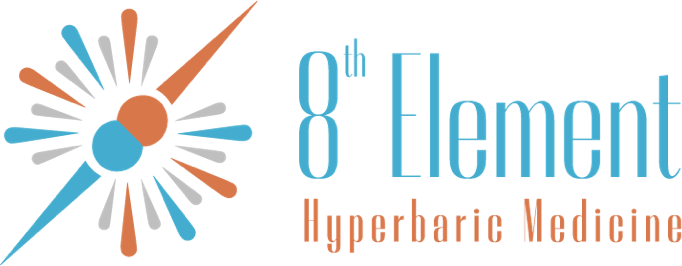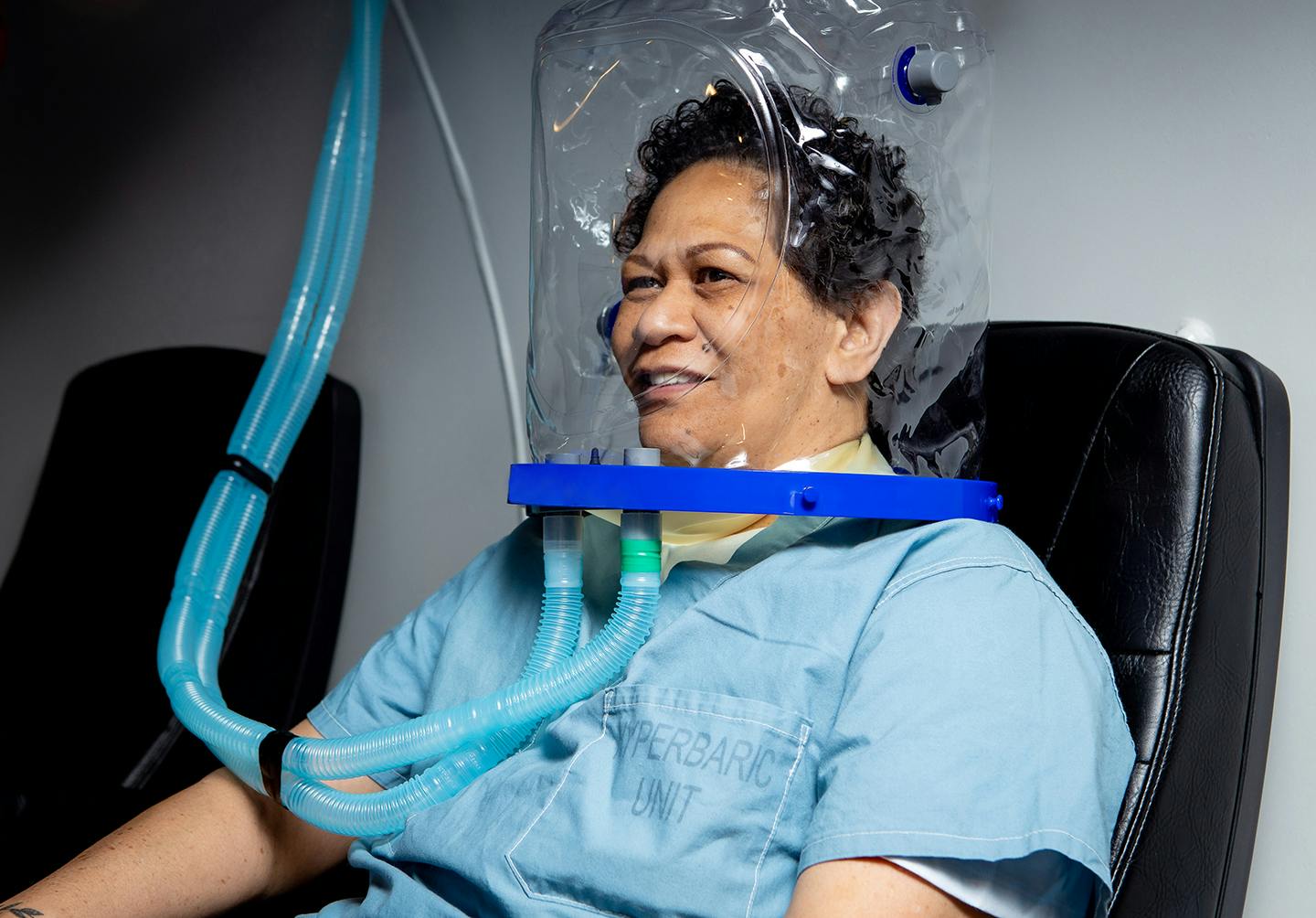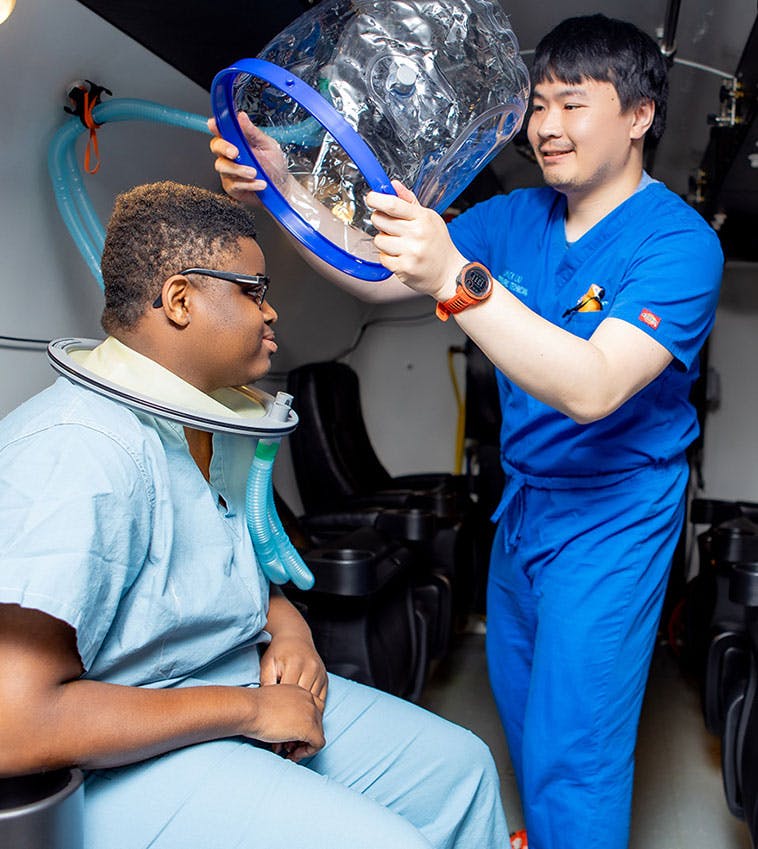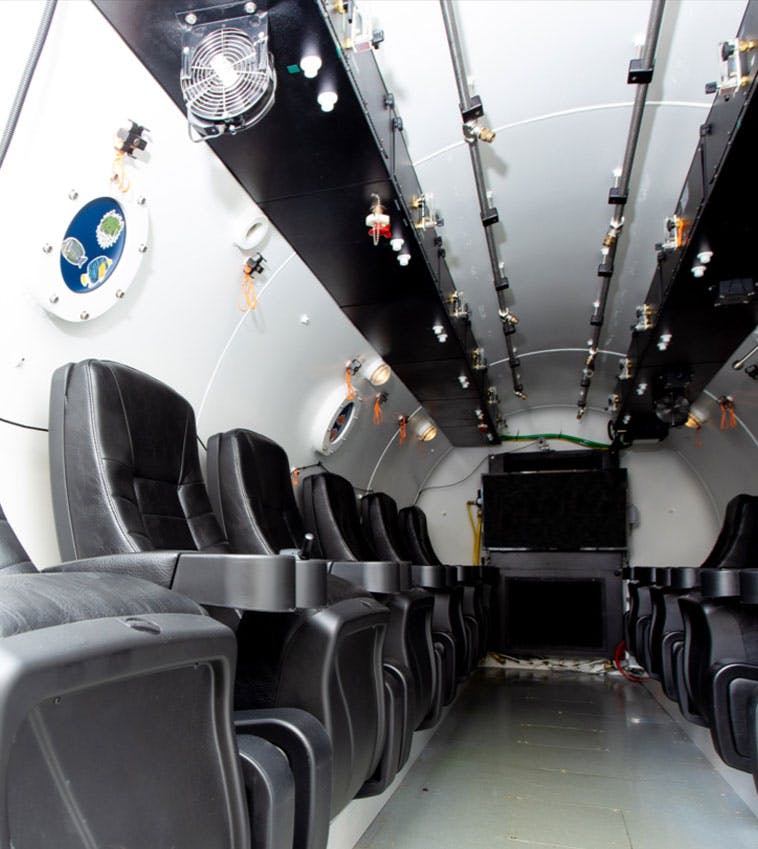Hyperbaric Oxygen Therapy (HBOT) is a proven treatment for late-effect radiation injuries, including osteoradionecrosis (bone and jaw damage) and soft tissue radionecrosis (damage to tissues like the chest wall, bladder, and GI tract).
How Does Hyperbaric Medicine Treat Late-effect Radiation Injury?
HBOT treats late-effect radiation injury by delivering 100% oxygen under increased atmospheric pressure. This allows oxygen to dissolve directly into the bloodstream and tissues, increasing its concentration in areas where blood flow has been compromised due to radiation. The enhanced oxygen supply promotes cellular repair, reduces inflammation, and stimulates the growth of new blood vessels (angiogenesis), which is crucial for tissue regeneration and healing.
HBOT also enhances collagen production, helps reduce fibrosis, and accelerates the repair of damaged tissue. It also boosts the activity of white blood cells, improving the body’s ability to fight infection. These effects help treat conditions like osteoradionecrosis and soft tissue radionecrosis, where tissue damage is often extensive and chronic. By promoting tissue oxygenation and repair, HBOT helps reverse the long-term effects of radiation injury.









